TL;DR
The OnePlus Pad Lite is a budget-friendly tablet that surprisingly punches above its weight, especially in audio quality and build. While its 11-inch display is decent for media, it's not the sharpest and struggles with outdoor brightness. Performance is solid thanks to 8GB of RAM and a capable Helio G100 chip, making multitasking smooth. Battery life is a standout, easily lasting a full day, and it boasts faster charging than its main competitor, the Xiaomi Redmi Pad 2. Despite basic cameras, its value proposition is strong, offering longer software support and more RAM for a competitive price. Curious to see how it stacks up? Dive into the full review!
Coinciding with the back-to-school season, OnePlus introduces a new, more affordable tablet. Following our review of its higher-end counterpart, the OnePlus Pad 3, approximately a month ago, we now examine its budget-friendly alternative, the OnePlus Pad Lite. Its specifications bear a strong resemblance to the Xiaomi Redmi Pad 2 4G, which we recently evaluated.
This review examines the performance of the OnePlus Pad Lite and assesses its competitiveness against Xiaomi’s budget-oriented alternative.
Design and Build Quality
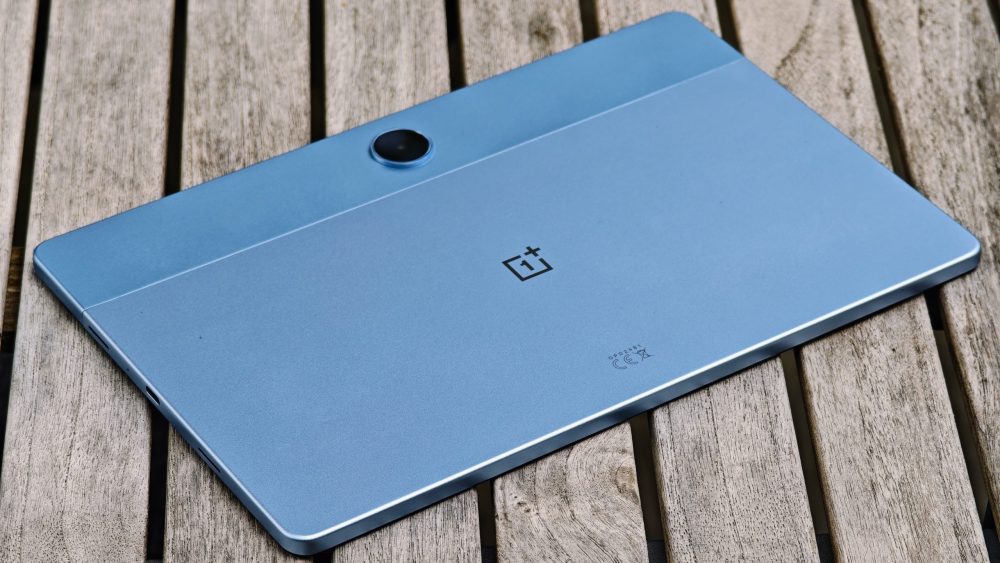
The OnePlus Pad Lite is offered exclusively in a light blue metallic shade, dubbed “Aero Blue” by OnePlus. While it is common to praise the build quality of many devices, the premium feel of this tablet is genuinely remarkable, belying its budget positioning. It features a unibody aluminum chassis, providing a solid and well-constructed feel in hand. Additionally, the matte finish is both aesthetically pleasing and effectively resists fingerprints.
The device carries an IP42 rating, offering protection against dust and light moisture. Similar to the Xiaomi Redmi Pad 2, it lacks a fingerprint reader, requiring users to rely on facial recognition or a passcode for authentication.
Display
The tablet is equipped with an 11-inch IPS display, featuring a resolution of 1920 x 1200 pixels and a 90 Hz refresh rate. With a relatively low pixel density of 207 PPI, the screen does not offer razor-sharp clarity. While entirely adequate for video consumption and gaming, a slight softness in detail becomes apparent, particularly with smaller text on webpages or in documents. Nevertheless, the overall experience remains satisfactory, and extended reading is comfortable.
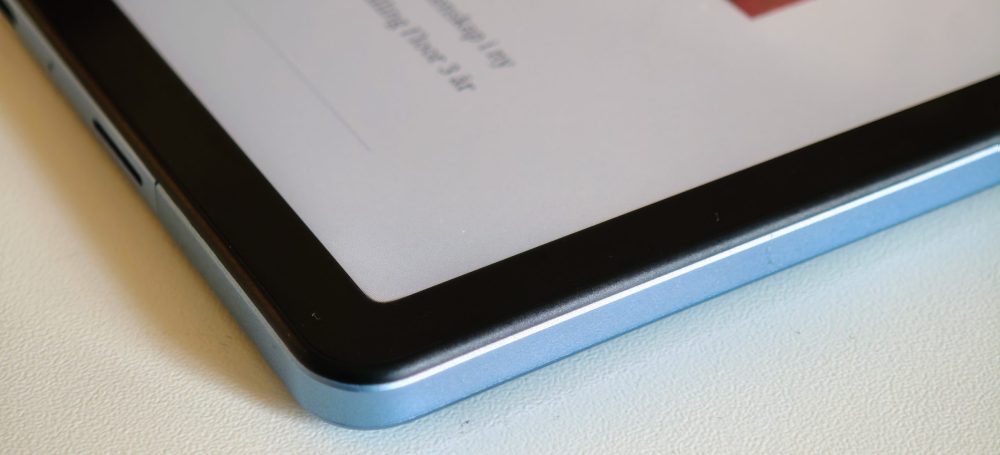
The display bezels are notably substantial, which is typical for devices in this price range.

The screen’s primary limitation is its brightness, peaking at 500 nits. While this is ample for indoor use, outdoor viewing, such as watching a movie, necessitates maximizing brightness and seeking shaded areas. The display is also quite susceptible to reflections.
Audio
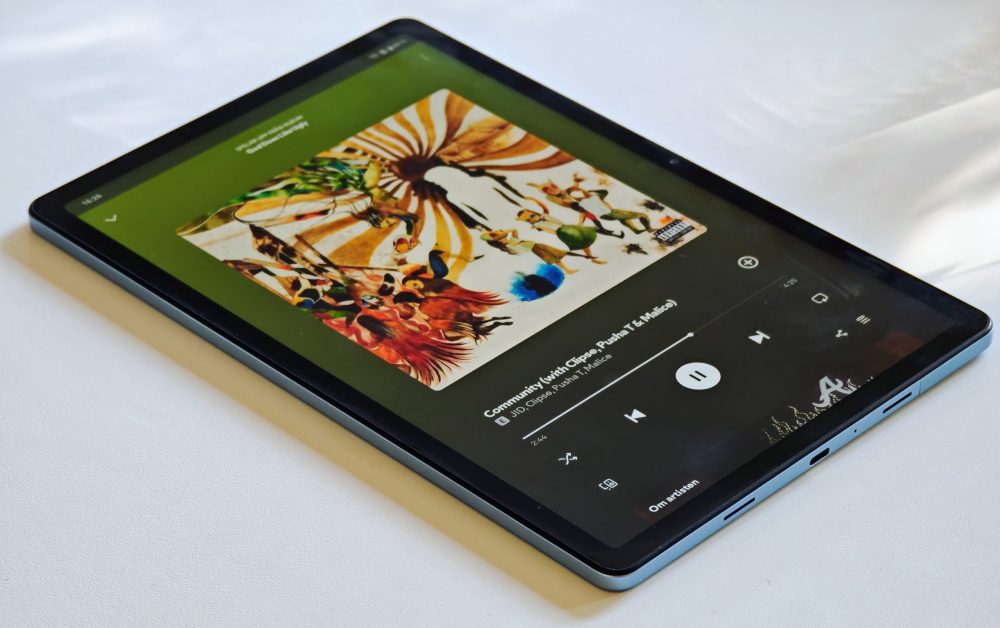
Regarding audio quality, the OnePlus Pad Lite excels, mirroring the performance of the Redmi Pad 2. Equipped with four speakers, the tablet delivers exceptionally good sound for its price range. It offers high volume output, clear audio reproduction, and an impressive soundstage with notable detail. Throughout the testing period, we frequently chose to use the Pad Lite as a primary speaker for Spotify, a testament to its audio fidelity.
Performance and Software
The OnePlus Pad Lite is offered in two configurations: one with 4G support and 8 GB RAM, and another with Wi-Fi connectivity and 6 GB RAM. Our evaluation focused on the 8 GB model. Like the Redmi Pad 2, this tablet is powered by the MediaTek Helio G100, a chipset perfectly adequate for all but the most graphically demanding games. In our review of the Redmi Pad 2, we noted that its 4 GB of RAM proved to be a limiting factor, impacting performance. The additional RAM in this model significantly enhances performance; switching between multiple applications is quick and seamless, and the tablet maintains responsiveness even under multitasking loads. This represents a substantial improvement, addressing a key performance bottleneck observed in its competitor.
Furthermore, the tablet operates on OxygenOS 15, a streamlined and user-friendly version of Android with minimal bloatware. It includes a feature OnePlus refers to as “Open Canvas,” designed for side-by-side application multitasking.

Open Canvas is activated by a two-finger swipe down on the screen, after which an additional app can be launched. This functionality integrates well with most applications, and the width of the windows can be easily adjusted, enabling scenarios such as having Spotify open while browsing a blog.
OnePlus also promises a total of four new OS versions and six years of security updates.
Battery and Charging
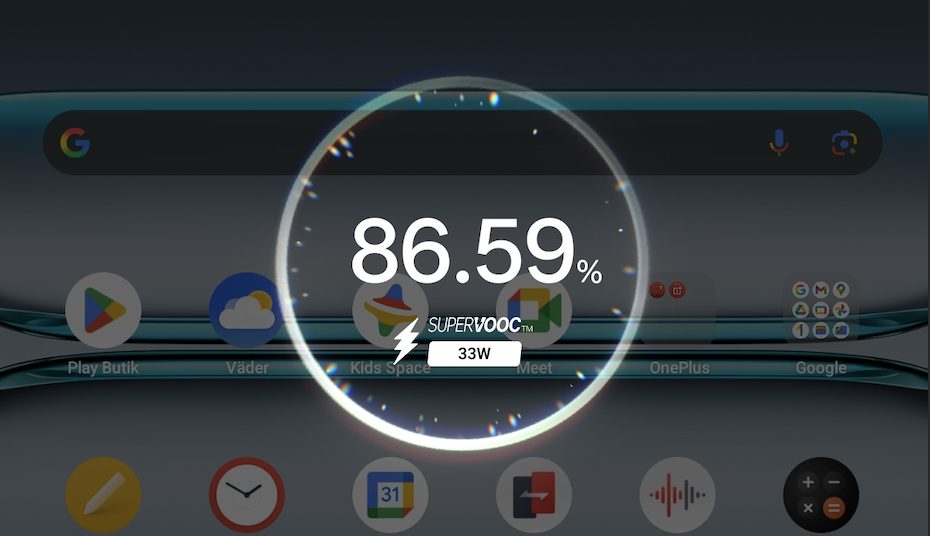
A significant advantage of its more efficient processor and moderate-resolution display is their contribution to power efficiency. OnePlus has further integrated a substantial 9340 mAh battery. The combined result is exceptional battery life; our tests yielded approximately 10 to 11 hours of active usage, encompassing browsing and video playback.
Additionally, the device exhibits remarkably efficient standby time. OnePlus claims up to 54 days, and while we could not fully verify this claim during our testing period, we can confirm its exceptional charge retention during standby. This characteristic makes it highly convenient for intermittent use, allowing users to pick it up after extended periods of inactivity without immediately needing to locate a charger.
For charging, 33W “fast” charging is supported, which is acceptable and notably quicker than, for example, the Redmi Pad 2. However, fully charging such a large battery, even at 33W, still requires a considerable duration; users should anticipate over two hours for a complete charge, with 10–75% typically achieved in approximately 1 hour.
Camera
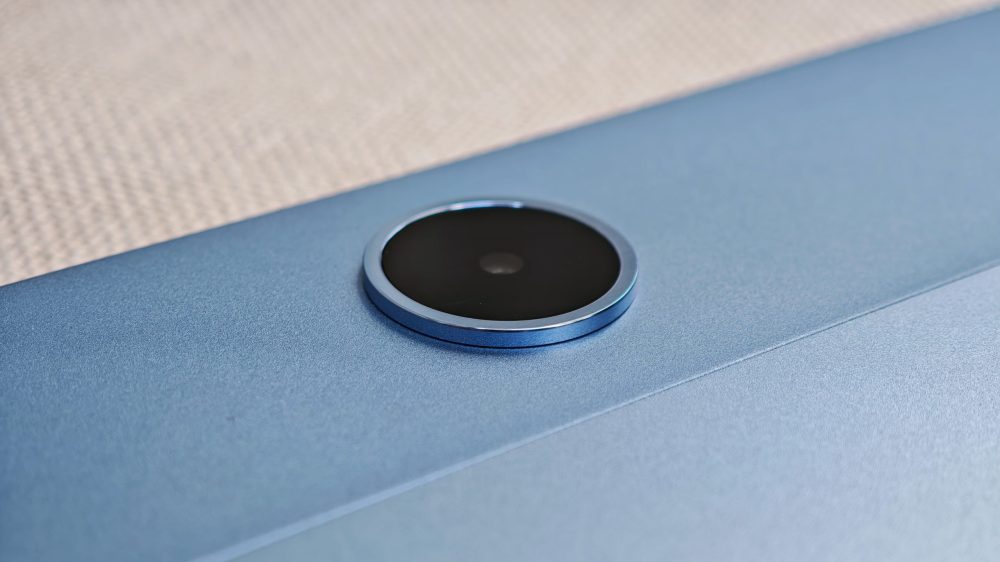
Cameras on tablets, particularly in the budget segment, are seldom a highlight, and the OnePlus Pad Lite is no exception. Here, OnePlus has opted for a minimalist approach, equipping the tablet with a single 5 MP camera on the rear and an identical 5 MP camera on the front.
Images are acceptable in good lighting conditions but lack detail and, as expected, perform weakly in low-light environments. Nevertheless, for practical applications such as video calls and QR code scanning, their performance is adequate.
Conclusion
As previously stated, the tablet is available in two configurations: the 4G-enabled, 8 GB RAM model under review, and a Wi-Fi-only variant with 6 GB RAM. With recommended prices of 2990 SEK and 2690 SEK respectively, the modest additional investment for 4G connectivity and increased RAM renders the choice of the higher-end model highly compelling.
At the time of this review, OnePlus is offering an introductory promotion, setting the prices at 2690 SEK and 2490 SEK. This reduced price differential further solidifies the value proposition of the higher-tier model.
Its direct competitor, the Redmi Pad 2 4G, is priced at 2990 SEK. While the Redmi Pad 2 offers a marginally superior display and memory card support for storage expansion, in most other aspects, the OnePlus Pad Lite presents a more favorable overall proposition: a more competitive price, double the RAM, faster charging capabilities, and robust future support with six years of updates.
In conclusion, for those seeking a more affordable tablet, the OnePlus Pad Lite emerges as a compelling option.
OnePlus sent review units for this test. Senders of material have no editorial influence on our tests; we always write independently with our readers and consumers in focus.

